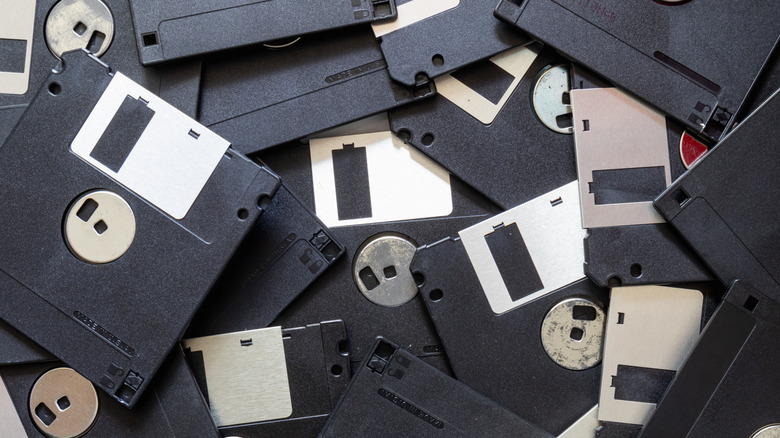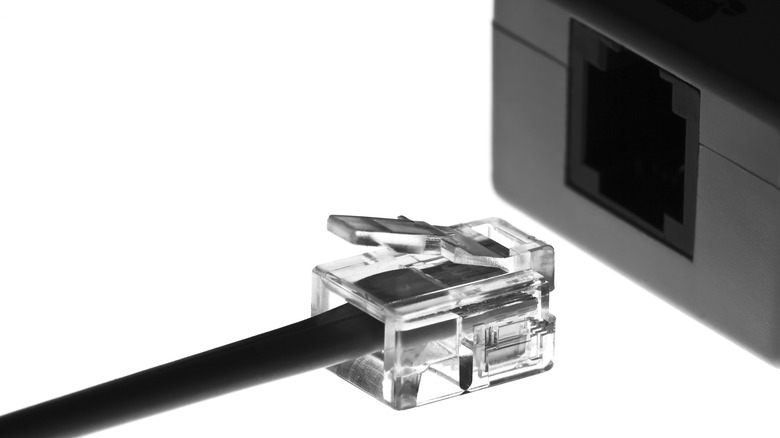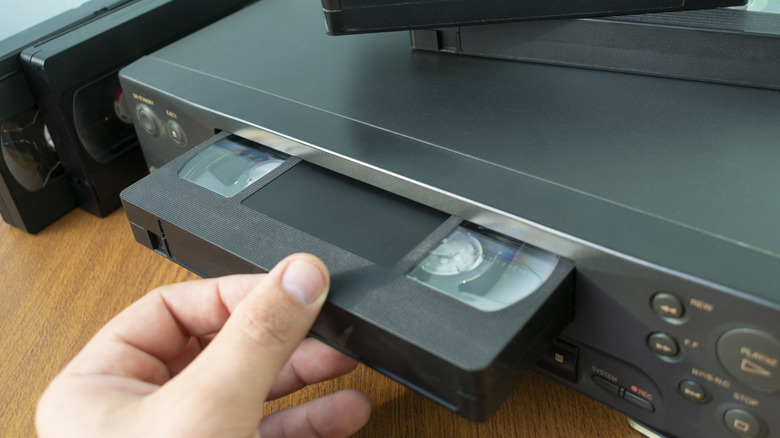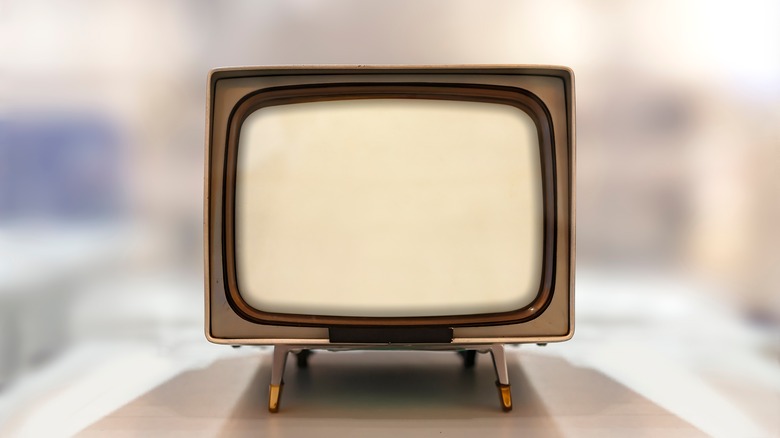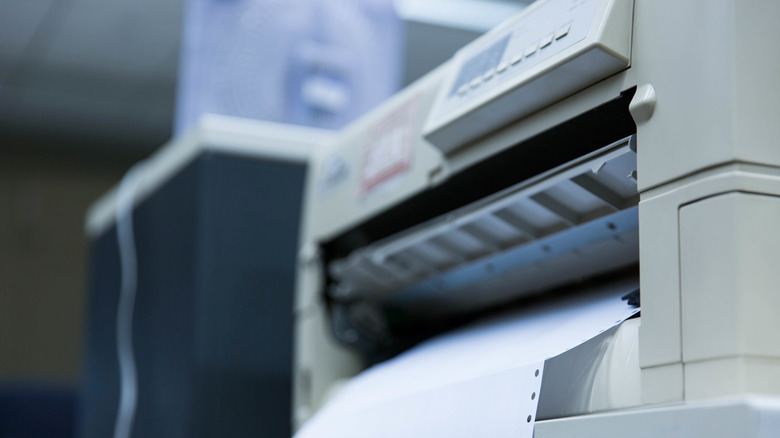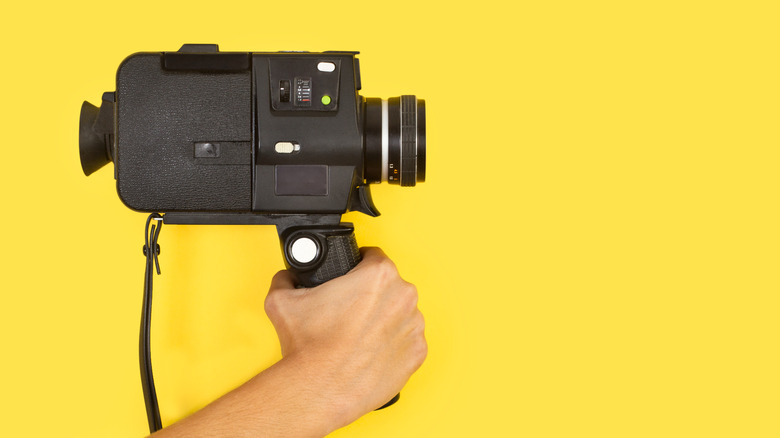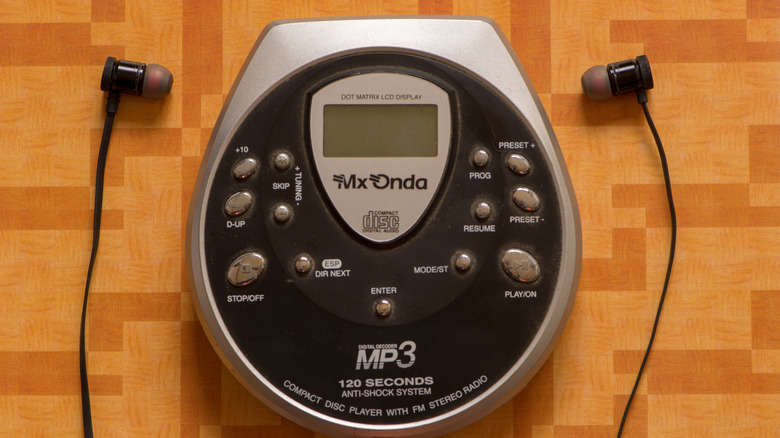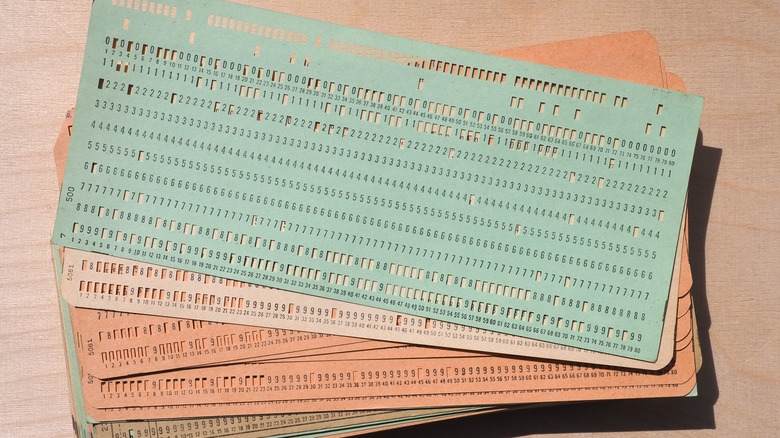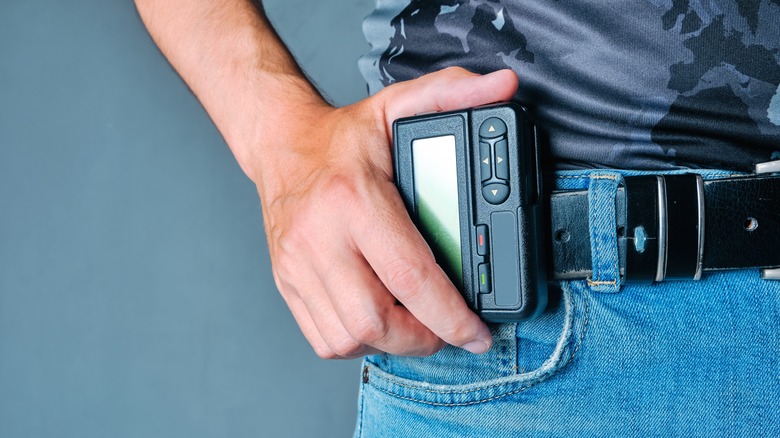10 Classic Tech Accessories We're Glad Became Obsolete
In the last few decades, numerous tech gadgets and devices have come and gone, leaving behind a trail of nostalgia and a clear mark on our digital development. Today, we're taking a walk down memory lane, revisiting the tech relics that once filled our lives with beeps, buzzes, and bulk.
From the whirring and clattering of dot-matrix printers to the distinctive magnetic tapes of VHS and cassettes, these devices were once cutting-edge but are now charming reminders of simpler times. Bulky CRT monitors and TVs, with their deep backs and heavy frames, once dominated our living rooms and office spaces, offering a viewing experience that's worlds apart from today's sleek flat-panel displays.
Floppy disks and punched cards, early forerunners in data storage, seem almost quaint compared to the terabytes of cloud storage we now hold in the palm of our hands. Portable CD players and Super 8 cameras, symbols of portable entertainment, have been replaced by the multifunctionality of smartphones and digital media. Dial-up modems, with their unforgettable connection sounds, laid the groundwork for the high-speed, always-on internet connections we enjoy today.
Each of these technologies, in their time, represented a step forward, but as we moved into an era of greater efficiency, quality, and convenience, they naturally became relics of the past. Here is a rogue's gallery of classic tech accessories we're glad became obsolete.
Floppy disks
Floppy disks were essentially magnetic storage devices that were used from the 1970s to the early 2000s for storing and transferring data on personal computers. They had a flexible magnetic disk, on which data was magnetically stored, inside a plastic shell.
A floppy disk drive was equipped with a read/write head, which would access the data arranged in circular tracks on the disk. The most common size was the 3.5-inch disk, which was capable of storing 1.44 MB. To use a disk, it was inserted into a drive, which then positioned its head over the appropriate track to read or write data.
However, floppy disks were very easy to damage and prone to wear, which could corrupt the data. As time went on, their limited storage space made them less useful as file sizes increased with evolving technology. Additionally, floppy disks needed physical storage space, manual handling, and compatible disk drives for use. These drawbacks paved the way for more advanced technologies like USB flash drives and cloud storage, which offer larger storage capacities and faster data transfer.
Today, no one is upset that floppy disks are a thing of the past, as current storage solutions are much more efficient, reliable, and better suited to the needs of the digital era.
Dial-up modems
Dial-up modems were an annoying (if mildly nostalgic) internet access method from the 1980s to the early 2000s that connected computers to the internet using standard telephone lines. They worked by translating the computer's digital data into analog signals suitable for phone lines.
When you wanted to go online, the modem would dial an ISP's (Internet Service Provider's) number, often creating those iconic and sometimes annoying sounds — a mix of beeps and static. This noisy sequence was the modem negotiating a connection. One major downside of dial-up was its snail's pace, maxing out at about 56 KBs per second. This slow speed turned simple tasks like downloading files or streaming videos into lengthy, often frustrating processes. Plus, being online meant your phone line was busy, so no calls could come in or go out.
Then came broadband technologies like DSL and cable, with their faster speeds that freed up the phone line. DSL was a game-changer that made every dial-up household green with envy. Wi-Fi's arrival further revolutionized internet access, allowing users to connect wirelessly. These new advancements rendered dial-up modems nearly extinct, as they couldn't match the speed and convenience of newer technologies.
Today, we generally look back at dial-up modems with a mix of nostalgia and relief. They're a reminder of how far internet technology has come, evolving into the faster and more convenient systems we depend on nowadays.
VHS and VCRs
VHS tapes and VCRs were once the go-to for home movie watching and recording, popular from the late 1970s through the early 2000s. The VHS tape, a large rectangular cassette, stored movies on magnetic tape, and the VCR was the device that played these tapes on your TV.
Using a VCR was pretty straightforward. You'd slide a VHS tape in, hit play, and your movie or show would appear on the screen. Recording was simple too, just click record to tape your favorite TV shows right off the air.
But VHS wasn't perfect. The picture and sound quality were pretty basic, especially compared to what we're used to now. The tapes didn't age well, either. Over time, they'd get worn out, making the picture and sound even fuzzier. Plus, they were bulky and took up a lot of shelf space.
Then DVDs arrived and changed everything. DVDs were smaller, had crisper audio and visuals, and were much more durable, quickly making VHS look and feel outdated. As digital recording and streaming services came into play, the convenience and quality of watching and recording shows improved exponentially.
Now, VHS and VCRs have a sort of nostalgic charm, a throwback to a simpler time in home entertainment, reminding us of how far technology has come.
CRT monitors and TVs
CRT (Cathode Ray Tube) monitors and TVs were the big, boxy screens that dominated our living rooms and computer desks from the mid-20th century into the early 2000s. These chunky units worked by firing electrons onto a phosphorescent screen to create an image that was a bit like a very sophisticated electronic version of pointillism.
If you'd ever moved one, you'd remember it (or at least your back would). They were ridiculously heavy and bulky, with this huge backside that seemed to take up half the room. Switching one on wasn't instant either. They needed a warm-up period where the screen would slowly come to life with a low hum and a gradual increase in brightness.
CRTs had their issues. They were space hogs and energy guzzlers, heating up rooms in the summer. There was also a bit of concern about low-level X-ray emissions, although they were shielded to be safe. Image-wise, they did the job, but by today's standards, they can't compete. The resolution and overall image quality just don't hold up next to modern screens.
Then came the LCD and LED flat screens. These were game changers: lighter, thinner, more energy-efficient, and with way better picture quality. They could fit just about anywhere, marking a massive leap in technology and convenience.
Now, CRTs are mostly a nostalgic memory. They remind us of the progress that's been made, as they were replaced by sleeker, smarter screens that deliver crisp images without taking over our living spaces.
Dot matrix printers
Dot matrix printers were once a staple in offices and homes, particularly popular from the 1970s through the 1990s. They worked by striking an ink-soaked ribbon against paper, creating characters and images with a series of tiny dots, kind of like a fancy typewriter.
They were notoriously loud, clattering away as they printed. It was a distinct, almost rhythmic noise that could be heard throughout offices. And they weren't just noisy. They were slow, taking their sweet time to print each page. The print quality was pretty basic, too. It got the job done for simple texts and basic graphics, but it lacked the finesse and clarity of today's printers. Over time, the ribbons would also fade, leading to even poorer quality prints. The best part, however, was the perforated chad strips on the side of the paper that you could tear off and fold into accordion springs.
But then, inkjet and laser printers came onto the scene. These newer machines were a dream in comparison. They were quieter and faster and produced high-quality prints. They could handle detailed images and a variety of fonts with ease, something dot matrix printers struggled with.
Now, dot matrix printers are mostly a relic of the past. They represent a bygone era of printing technology that laid the groundwork for the high-quality, versatile printers we use now.
Cassette tapes and players
Cassette tapes and players were a huge part of the music scene from the 1970s to the 1990s. These portable, plastic tapes contained a magnetic strip that stored audio, which could be played in cassette players in cars, boomboxes, and Walkmans.
Using a cassette tape was a unique experience. You'd pop the tape into the player, press play, and music would start flowing. If you wanted to skip a song, you'd have to fast forward or rewind, often guessing where the next track began. And who could forget the ritual of flipping the tape over to play the other side?
But cassettes had their downsides. The sound quality wasn't top-notch, especially after playing a tape many times, as the tape could wear out or get stretched or tangled. Plus, they were prone to damage, caused by a little heat or a tape jam, and your favorite album might be gone forever.
Enter CDs and MP3 players. These new formats offered clearer sound, more durability, and the convenience of skipping tracks with a simple push of a button. Digital music made listening to your favorite songs so much easier and more fun.
Today, many of us remember cassettes fondly from the days our crush would make us a mix tape of their favorite romantic songs. With cassette tapes, listening to music was a bit more of a hands-on experience that lacked the convenience of the new methods we use today.
Super 8/8mm handheld video cameras
Super 8 cameras, which were all the rage from the 1960s to the 1980s, brought the magic of filmmaking into the hands of everyday people. These nifty little cameras used 8mm film cartridges and were a lot easier for the average Joe to use compared to the bulky, professional movie cameras of the time.
Shooting with a Super 8 was kind of like capturing little snippets of life on film. You'd load in the cartridge, start filming your family picnic, your kids playing, or maybe even try making a mini-movie. It was thrilling, partly because you wouldn't get to see how it all turned out until the film was developed, since there was no instant playback like today.
But Super 8s weren't without their issues. You only got a few minutes of film per cartridge, and the cost of buying and developing those films could start to add up. The video quality had its own retro charm, but it's nothing compared to the HD we're used to now. And if you wanted to edit, you were in for a real task when you had to manually cut and splice film strips.
Then along came digital camcorders and smartphones. They made everything so much easier and accessible. Longer recording times, no need for developing film, instant playback, and easy editing.
These days, Super 8 cameras are kind of like relics from a different era of filmmaking, a nostalgic nod to the days when filmmaking was a bit more adventurous.
Portable CD players
Portable CD players were one of the hottest new tech accessories from the late 1980s to the early 2000s. As the successors of the Walkman, they offered a new way to enjoy music on the go. These devices — commonly referred to by their Sony brand-name "Discman" — played audio CDs and allowed users to listen to albums in digital quality through headphones.
Carrying around a portable CD player was a bit of a statement back then. You'd have this disc player in your pocket or bag, with headphones on, and a binder or case of CDs if you wanted variety. It felt like carrying your own personal soundtrack with you.
But these players had their quirks. They were somewhat bulky, especially compared to today's standards. If you were moving too much, they'd often skip or jitter, interrupting your music experience. And battery life was always a concern — you'd need a steady supply of spare batteries to keep the tunes playing.
Then MP3 players and smartphones came along. These devices were smaller, could store thousands of songs in digital format, and didn't skip when you moved. Plus, the rechargeable batteries meant you weren't constantly buying new ones.
Today, portable CD players are mostly a nostalgia item. They paved the way for the convenience and vast music libraries we carry in our pockets today.
Paper data storage / punched cards
Paper data storage, or punched cards, were the unsung heroes of early computing, widely used from the late 19th century all the way through the mid-20th century. These cards were often just stiff pieces of paper and had holes punched into them in specific patterns to represent data or commands for early computers.
Using punched cards was a bit like feeding a very fussy machine. You'd punch your data onto these cards, then feed them into a computer, which would then interpret the hole patterns as instructions or data. It was a tangible, almost craft-like approach to programming and data entry.
Needless to say, punched cards were an imperfect solution. They were bulky and not exactly user-friendly. Imagine storing rooms full of these cards just for one program or dataset. Plus, if you made a mistake in punching a card, it could be a hassle to find and fix it. Their storage capacity was minimal by today's standards, and managing the cards was a logistical challenge, to say the least. The physical nature of the data meant that everything had to be stored and sorted manually, which was time-consuming and prone to errors.
The transition to magnetic and then digital data storage was a massive leap forward. Modern storage methods like hard drives and cloud storage offer vastly superior capacity and reliability, and are so much more convenient. Today, punched cards are a thing of the past, a quaint reminder of the early days of computing.
Pagers
Pagers, or beepers as we often called them, were a real sign of the times in the 1980s and 1990s. These little gadgets were all about receiving short messages, usually just a phone number or a brief note, telling you someone was trying to get in touch.
Having a pager clipped to your belt or tucked in your pocket felt pretty cool back then. It would buzz or beep, and you'd check the tiny screen to see who was calling you. The catch, however, was that you had to find a phone to call them back, which was a whole adventure before cell phones became common.
When it comes down to it, pagers were pretty basic. They could only receive messages, not send them, which was a bit of a one-sided conversation. And if you couldn't find a phone nearby, that beep was just a tease until you could.
Then the era of cell phones began. Suddenly, you could not only receive messages but also reply right away, make calls, and later on, even send texts and emails. The convenience of having a two-way communication device in your pocket made pagers seem outdated pretty fast.
Today, pagers are not completely obsolete, however. According to NPR, about 80% of hospitals still use pagers to alert medical staff to patient needs. Outside of the medical industry, pagers are pretty much a technological relic and a reminder of the super-connected world we now live in.

